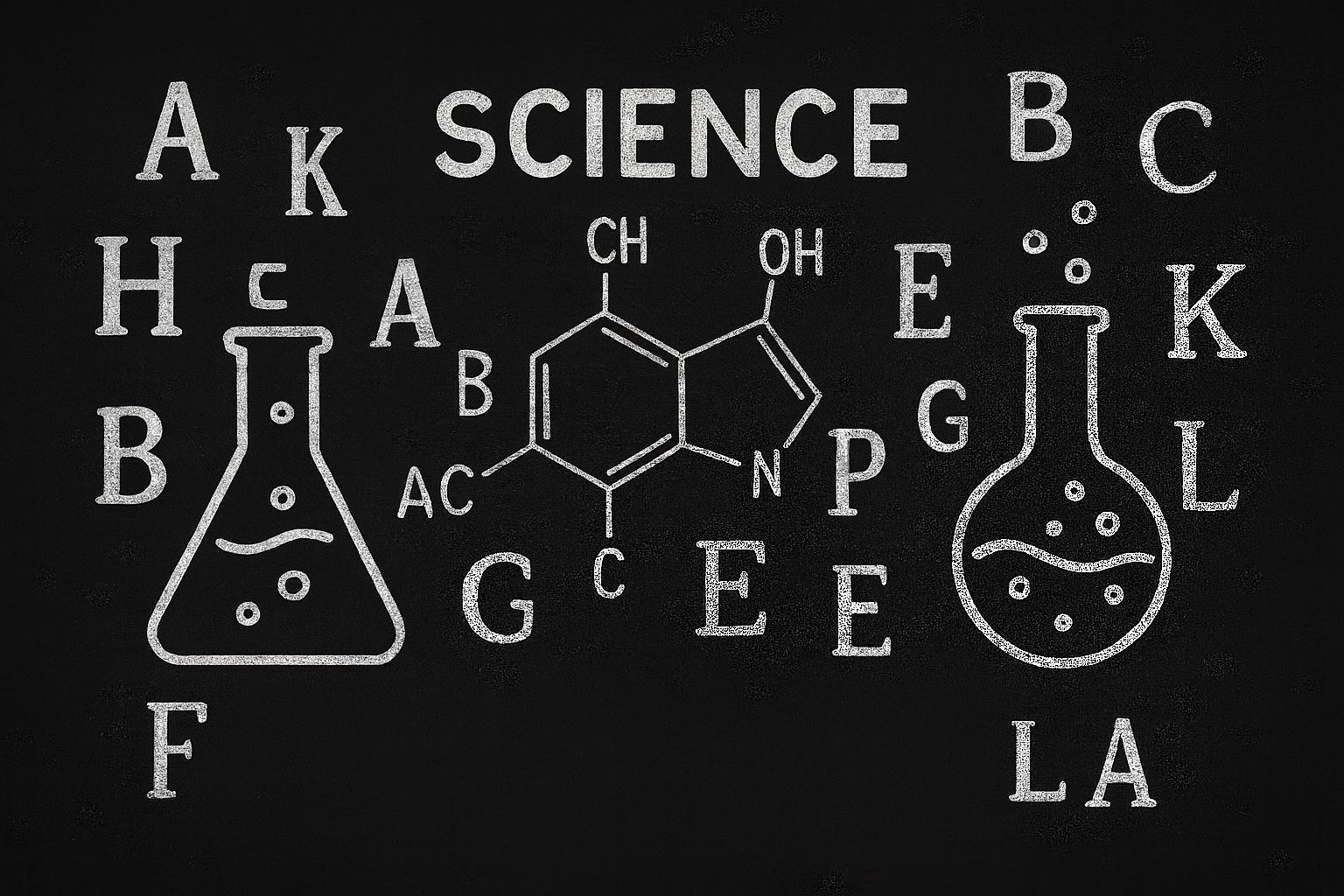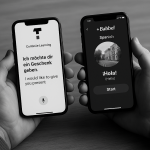In 2025, there are more language learning apps than ever before. Taalhammer Duolingo, Babbel, Busuu, Memrise, the list goes on. Millions of learners download them every year, yet a frustrating question remains: which language learning app actually works?
The truth is that not all apps are built on the same foundation. Some focus on keeping you entertained with streaks and badges. Others offer traditional, textbook-style lessons. A few push immersion through authentic content. But very few take into account what cognitive science, memory research, and decades of pedagogy tell us about how people actually learn and retain a language.
When we talk about a science-based language learning app, we mean tools that are grounded in:
- Full-sentence practice instead of isolated words,
- Spaced repetition and active recall that match the brain’s memory patterns,
- CEFR progression for structured growth, and
- Cultural and contextual learning for real-world use.
This article compares the leading apps of 2025 side by side, based on scientific principles. And while each has its strengths, only one combines pedagogy, technology, and psychology into a complete system.
- How We Compared the Apps Scientifically
- Gamified Apps vs. Structured CEFR Courses: Duolingo, Babbel, Busuu compared
- AI Vocabulary Apps vs Immersion Apps: Lingvist and LingQ Compared
- Mnemonic Tricks vs. Human Tutors: Memrise and italki compared
- Sentence Drills vs. Pure Spaced Repetition: Glossika, Anki, Quizlet compared
- Taalhammer: The Only Complete Science-Based Language Learning App
- Verdict: Best Language Learning App Based on Science in 2025
- How to Start Learning a Language With Science Today
- FAQ: Best Language Learning Apps Based on Science
How We Compared the Apps Scientifically
To answer the question “What is the best language learning app based on science?” we used three categories of evaluation:
- Pedagogy – Does the app follow CEFR levels? Does it teach full sentences, grammar in context, and cultural knowledge?
- Technology – Does it use adaptive algorithms, spaced repetition, or AI personalization to optimize learning?
- Cognitive Psychology – Does it apply proven memory techniques (spaced repetition, active recall, retrieval practice)? Does it manage cognitive load and motivation effectively?
Every app we reviewed – from Duolingo and Babbel to Lingvist, LingQ, Memrise, italki, Glossika, Anki, and Quizlet – was analyzed through these lenses. Each has something to offer, but as you’ll see, most are incomplete. They excel in one area but fall short in another.
Only Taalhammer consistently checks every box: CEFR-aligned pedagogy, AI-driven spaced repetition, full-sentence communication, cultural integration, and habit formation built on mastery rather than shallow gamification.
In the next sections, we’ll look at how the major apps cluster together, what science they use – and what they miss.
Gamified Apps vs. Structured CEFR Courses: Duolingo, Babbel, Busuu compared
When people search for a language learning app, the names Duolingo, Babbel, and Busuu usually come first. Each has value, but when measured against science, all reveal clear limits.
Duolingo: Addictive but Shallow
Duolingo’s mascot, streaks, and short lessons make it the most popular entry-level app. It builds daily habits and lowers the barrier to language learning. But its pedagogy is weak: lessons often focus on isolated words or odd phrases, grammar is reduced to multiple-choice, and spaced repetition is tuned for engagement rather than memory. Duolingo is fun for beginners but not enough for fluency.
If you want to see how gamification compares with sentence-based learning, we’ve done a full breakdown of Taalhammer vs Duolingo: Which Language App Is Actually Better for Learning and for Whom?
Babbel: Structured but Static
Babbel offers CEFR-aligned lessons from A1 to B2, with grammar explanations, dialogues, and cultural notes. This gives it more academic credibility than Duolingo. However, progression is linear and not personalized. Its review system is basic and lacks advanced AI adaptivity. Babbel works well for learners who like structure but doesn’t optimize memory or long-term retention.
Busuu: Social but Inconsistent
Busuu blends CEFR lessons with community features, allowing learners to submit writing or audio for peer corrections. This adds cultural flavor and authentic feedback. Still, the quality of feedback varies widely, and the review system remains light compared to science-based alternatives.
Verdict on Duolingo, Babbel, Busuu
Duolingo motivates, Babbel structures, and Busuu adds social accountability. Yet none combine full-sentence learning, advanced spaced repetition, and AI personalization. For learners serious about long-term retention, these apps are stepping stones, not full solutions – and this is where Taalhammer clearly stands apart.
AI Vocabulary Apps vs Immersion Apps: Lingvist and LingQ Compared
Unlike Duolingo or Babbel, Lingvist and LingQ target more serious learners. Lingvist focuses on AI-driven vocabulary acquisition, while LingQ offers authentic immersion through texts and audio. Both reflect scientific principles, but neither delivers a complete solution.
Lingvist: Fast but Shallow
Lingvist builds vocabulary through frequency lists and adaptive spaced repetition. Learners see high-frequency words in short contexts, and the AI schedules reviews at optimal times. This makes it one of the fastest tools for lexical growth. From a memory science standpoint, it’s strong in active recall and retention. But it largely ignores communication and culture. Sentences are reduced to fill-in-the-blank drills, with minimal grammar explanations or dialogues. Learners may know many words quickly, but they struggle to use them in real conversation.
In our focused Taalhammer vs Lingvist comparison, we analyze how their repetition systems really stack up.
LingQ: Immersive but Overwhelming
LingQ takes the opposite path, immersing learners in authentic texts, podcasts, and audiobooks. Every new word is highlighted, tracked, and recycled, which aligns with the input hypothesis: exposure to language in context builds natural acquisition. It also provides rich cultural content. The drawback is cognitive load. Beginners face walls of unknown words, and the lack of guided grammar or structured progression can frustrate anyone not already advanced.
Verdict on Lingvist and LingQ
Both apps deliver valuable science: Lingvist excels at efficient vocabulary growth, while LingQ offers cultural immersion. Yet both are partial systems. Lingvist lacks context; LingQ lacks structure. For learners who want a complete solution – efficiency, immersion, and long-term retention combined – the stronger answer is Taalhammer, which unites all three pillars of science-based learning.
Mnemonic Tricks vs. Human Tutors: Memrise and italki compared
Some apps rely on memory shortcuts or real-life speaking practice instead of AI or gamification. Two examples are Memrise and italki. Both offer unique advantages, but when tested against scientific criteria, their limits are clear.
Memrise: Fun but Shallow
Memrise uses mnemonics and quirky associations to help learners remember words, alongside short clips of native speakers using everyday phrases. This makes learning lively and authentic compared to robotic voices. It applies spaced repetition and retrieval practice, but only at a surface level. Lessons are short, grammar is rarely explained, and cultural exposure is limited to slang or accent snippets. As a result, Memrise is a good supplement but struggles to carry learners past the beginner plateau.
If you’re curious how mnemonic tricks stack up against full-sentence practice, check out my article: Taalhammer vs Memrise: Best Language App for Your Learning Style [2025].
italki: Personal but Unscalable
italki connects learners directly with tutors for personalized lessons. This human-driven model provides real cultural context, instant feedback, and active recall in every session. Pedagogically, it is flexible: CEFR-aligned lessons or informal conversation, depending on the tutor. From a science perspective, this makes italki excellent for communication and retrieval practice.
The limitation is scalability. Daily tutoring is expensive, scheduling can be difficult, and there is no built-in spaced repetition system. Learners must pair italki with another tool to ensure systematic review.
Verdict on Memrise and italki
Memrise is memorable but shallow; italki is rich but costly and incomplete. Both are partial solutions that work best as add-ons. For learners seeking a complete, science-based system – combining memory optimization, personalization, and cultural context – the stronger choice is Taalhammer.
Sentence Drills vs. Pure Spaced Repetition: Glossika, Anki, Quizlet compared
Some learners skip gamification and courses, preferring apps built almost entirely on memory and repetition. The leading examples are Glossika, Anki, and Quizlet. Each applies science differently – and each comes with important limits.
Glossika: Discipline Over Depth
Glossika trains fluency through sentence repetition drills. By listening to and repeating thousands of sentences, learners automate patterns without consciously recalling grammar. This works for building speed, but it is also monotonous and culture-light. Learners may repeat correct phrases without fully understanding them, making Glossika best for highly disciplined users, not casual learners.
Anki: Pure Memory Optimization
Anki is the gold standard of spaced repetition systems (SRS). Every flashcard is scheduled at the moment you’re about to forget it, ensuring maximum retention. Cards can include words, sentences, audio, or images. The drawback is that Anki is only a tool – no CEFR path, no cultural input, no built-in content. Effectiveness depends entirely on the learner’s discipline and ability to build or find quality decks.
If you’ve tried Anki but want something more user-friendly, we reviewed the best Anki alternative for modern learners.
Quizlet: Accessible but Shallow
Quizlet is the simplest of the three. Teachers and students create shared flashcard decks, making it widely used in classrooms. It offers light spaced repetition and active recall, but most decks are isolated words and definitions. Quizlet works for test prep but offers little for building long-term fluency.
Verdict on Glossika, Anki, and Quizlet
All three highlight the importance of memory science, but each is fragmented. Glossika is repetitive, Anki demands self-direction, and Quizlet is shallow. They can support serious learners, but none provide the full package of pedagogy, technology, and psychology required for lasting fluency. That integration is what sets Taalhammer apart.

Taalhammer: The Only Complete Science-Based Language Learning App
After comparing gamified platforms, CEFR-based courses, AI vocabulary builders, immersion tools, mnemonic tricks, tutors, and memory engines, one conclusion is clear: each has value, but none are complete. Every competitor excels in one or two areas, yet all fail to unite pedagogy, technology, and psychology into a single, coherent system.
This is where Taalhammer stands apart. Designed entirely around cognitive science and real pedagogy, it provides a framework for long-term retention and genuine fluency.
Full-Sentence Learning Instead of Word Lists
Research shows the brain retains language best when learned in full sentences, not isolated words. Taalhammer embeds grammar and vocabulary in natural, everyday phrases, preparing learners for real communication from the start. Instead of memorizing “apple” or “orange”, you practice sentences like “I’d like an apple, please” or “Do you prefer oranges or apples?”. This mirrors natural language acquisition and ensures you learn how to speak, not just recite.
Adaptive AI + Spaced Repetition
At its core, Taalhammer uses an AI-powered spaced repetition engine. It tracks recall strength, reintroduces material at the optimal time, and creates a personalized memory curve for every learner. This way, reviews never feel random – you reinforce exactly what you need, when you need it.
CEFR Progression With Real-World Context
Unlike immersion-only apps such as LingQ, Taalhammer combines adaptivity with structured CEFR progression from A1 basics to advanced C1/C2 content. Lessons are tied to real-world topics and cultural contexts, so you don’t just learn correct forms – you learn how they’re actually used in conversation. Taalhammer gives you access to thousands of thematic collections at all six CEFR levels – and new ones are added daily.
Motivation Through Mastery, Not Gamification
While apps like Duolingo keep users chasing streaks and badges, Taalhammer builds intrinsic motivation. Progress is measured in sentences mastered and fluency growth, giving learners concrete evidence of improvement. This kind of feedback keeps users engaged long after the novelty of gamification fades.
The Complete Science Package
Taalhammer is the only app to deliver all three pillars of effective learning:
- Pedagogy – CEFR-aligned, full-sentence, contextual learning.
- Technology – AI-driven personalization with a scientifically designed SRS.
- Cognitive Psychology – Active recall, retrieval practice, and habit formation through mastery.
For learners serious about long-term fluency, Taalhammer is not just another app – it is a complete scientific system for language acquisition.
Verdict: Best Language Learning App Based on Science in 2025
After analyzing the leading apps, three patterns emerge:
- Gamified and entry-level apps like Duolingo, Memrise, and Quizlet are excellent at making language learning fun and accessible. But their science is shallow – they focus on recognition, streaks, or mnemonics rather than deep retention.
- Structured apps like Babbel and Busuu provide CEFR alignment and community corrections but lack advanced adaptivity and memory optimization.
- Power tools like Lingvist, LingQ, Glossika, and Anki are strong in one area (vocabulary, immersion, drills, or memory) but incomplete as stand-alone solutions.
Only Taalhammer integrates all the elements research shows matter most:
- Pedagogy – CEFR-aligned, full-sentence, context-rich learning.
- Technology – AI personalization combined with a scientifically validated spaced repetition system.
- Cognitive Psychology – Active recall, retrieval practice, habit formation, and motivation through mastery.
This makes Taalhammer the only app that is not just fun or structured or efficient – but complete. If your goal is real fluency and long-term retention, Taalhammer is the clear choice in 2025.
How to Start Learning a Language With Science Today
Language learning is not about collecting streaks or memorizing random words. It’s about training your brain to recall and use sentences naturally, in context, over the long term. That’s why science matters. Spaced repetition, active recall, CEFR progression, and cultural immersion are not buzzwords – they are the proven foundations of real fluency.
Most apps give you only part of that picture: a fun entry point, a structured course, or a memory tool. But only one app combines all of these into a complete scientific system: Taalhammer. With full-sentence learning, AI-driven personalization, and a design built on cognitive psychology, Taalhammer helps learners retain more, progress faster, and stay motivated for the long haul.
FAQ: Best Language Learning Apps Based on Science
What is the most effective language learning app in 2025?
The most effective app is Taalhammer, because it combines all proven elements of language acquisition: CEFR progression, full-sentence learning, spaced repetition, AI personalization, and cultural context. Other apps like Duolingo, Babbel, and Busuu are helpful for beginners, but they don’t integrate the full range of scientific methods.
Which language learning app is best for long-term language retention?
The best app for retention is Taalhammer, because it applies retrieval practice and active recall at optimal intervals, ensuring words and sentences are stored in long-term memory. Apps like Anki and Glossika also help with memory, but they lack cultural integration and CEFR progression.
Which language learning app is best for adults?
For adults who want serious results, Taalhammer is a strong option. Taalhammer provides the full science package. Casual learners may enjoy Duolingo or Memrise, but adults looking for efficiency and fluency benefit most from science-driven tools.
What’s the difference between vocabulary apps and full-sentence apps?
Vocabulary apps (like Lingvist or Quizlet) focus on single words or definitions, which are easier to memorize but harder to use in real conversations. Full-sentence apps (like Taalhammer) train both vocabulary and grammar together, making it easier to recall and use the language naturally.








